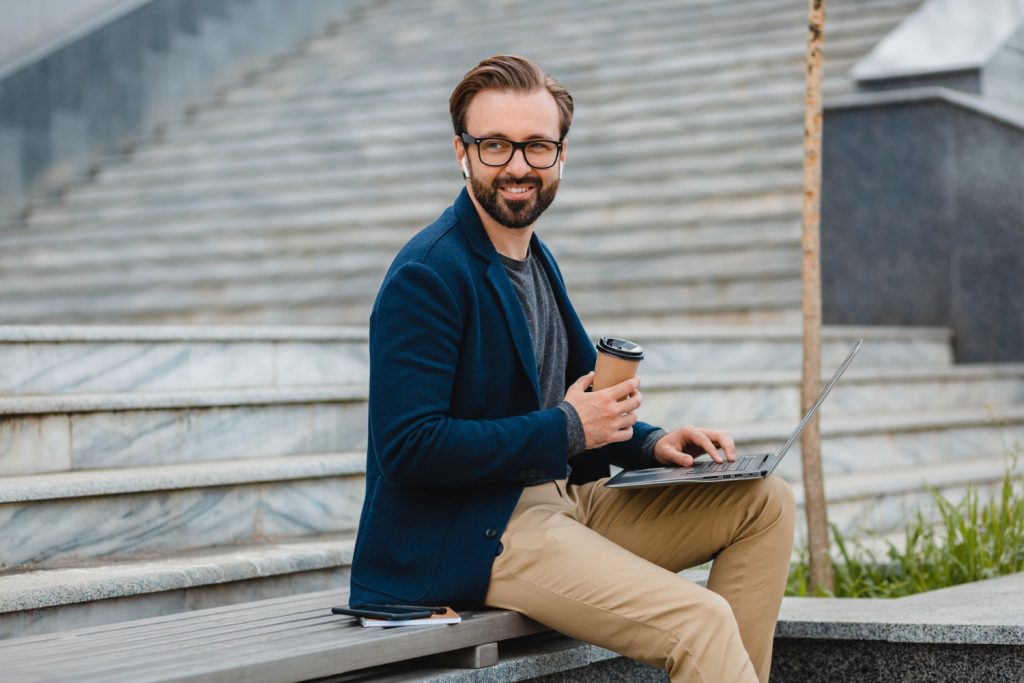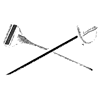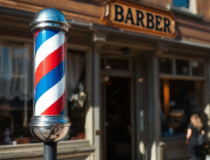Business Casual Attire: A Complete Guide for 2025

What is Business Casual and Why It Matters
Business casual dress code bridges the gap between formal business suits and casual attire, creating a professional appearance that prioritizes comfort without sacrificing polish. This workplace dress code allows employees to wear clothes that are more relaxed than traditional business formal while maintaining an office appropriate look.
In today’s workplace, over 61% of companies have adopted some form of business casual dress code. This shift reflects changing attitudes about professionalism, employee comfort, and workplace culture. Understanding business casual style helps you project a professional impression while feeling confident and comfortable throughout your workday.
This guide covers essential business casual outfits for both men and women, industry-specific variations, common mistakes to avoid, and practical tips for building a versatile business casual wardrobe.
Understanding Business Casual: Key Concepts and Definitions
Core Definitions
Business casual attire combines tailored pieces with relaxed elements to create a put together appearance that’s less formal than business suits but more polished than casual styles. The goal is achieving a professional look without requiring full formal business wear.
Key characteristics include:
- Tailored trousers instead of suit pants
- Dress shirts without ties
- Polo shirts as acceptable alternatives to button down shirts
- Leather shoes rather than athletic footwear
- Blazers or sports coats for added polish
Business Casual vs Other Dress Codes
Dress Code | Typical Items | Formality Level | Appropriate Settings |
|---|---|---|---|
Business Formal | Full suit, tie, dress shoes | Highest | Client meetings, formal events |
Business Casual | Dress shirt, tailored trousers, leather dress shoes | Moderate | Daily office wear, team meetings |
Smart Casual | Dark wash jeans, polo shirt, boat shoes | Lower | Casual fridays, after hours events |
Casual | T shirts, running shoes, cargo pants | Lowest | Free time, non-professional settings |
Why Business Casual is Important in Modern Workplaces
Business casual environments offer significant benefits for both employees and organizations. Research shows that comfortable workplace dress codes can improve employee satisfaction and productivity while maintaining professional standards.
Statistical benefits include:
- 70% of employees prefer business casual or relaxed dress policies
- Companies report improved employee retention with flexible dress codes
- Reduced clothing costs for employees compared to maintaining formal business suits
- Enhanced approachability between team members and management
The business casual setting allows for personal style expression while ensuring all employees maintain office appropriate appearances. This balance supports diverse workplace cultures while preserving professional impression during client interactions.
Essential Business Casual Pieces Comparison
Men’s Business Casual Essentials
Category | Must-Have Items | Colors | Styling Notes |
|---|---|---|---|
Tops | Dress shirt, polo shirts, button down shirt | Light blue, crisp white shirt, subtle colours | Avoid overly tight fits |
Bottoms | Business casual pants, dark wash jeans, long trousers | Navy, light grey, dark shades | Ensure proper length |
Shoes | Leather dress shoes, leather shoes | Brown, black | Avoid running shoes, flip flops |
Outerwear | Navy blazer, sports coat | Neutral colors | Optional but recommended |
Women’s Business Casual Essentials
Category | Must-Have Items | Colors | Styling Notes |
|---|---|---|---|
Tops | Blouses, cardigans, subtle patterns | Solid colours, neutral colors | Professional necklines |
Bottoms | Tailored trousers, knee length skirts | Dark shades, navy | Appropriate length |
Shoes | Closed toe shoes, modest heels | Black, brown, navy | Avoid overly casual footwear |
Dresses | Shift dresses, wrap dresses | Subtle colours | Knee-length or longer |
Step-by-Step Guide to Building Your Business Casual Wardrobe
Step 1: Assess Your Business Casual Setting
Observe your workplace culture during your first week to understand what’s considered business casual in your specific office. Many offices have varying interpretations of business casual style.
Key factors to consider:
- Industry standards (finance leans more formal, tech allows relaxed approach)
- Client-facing requirements
- Company handbook guidance
- Seasonal variations for colder weather
Step 2: Invest in Foundation Pieces
Start with versatile items that work across multiple business casual outfits:
Priority purchases:
- Quality dress shirt in crisp white and light blue
- Well-fitted business casual pants in navy and grey
- Leather dress shoes in brown and black
- Navy blazer or sports coat for elevated looks
Budget allocation:
- 40% on bottoms (pants, skirts)
- 30% on shoes and outerwear
- 20% on tops
- 10% on accessories
Step 3: Expand with Seasonal and Style Elements
Once you have foundation pieces, add variety through:
- Polo shirts for warmer weather
- Subtle patterns and textures
- Statement pieces that reflect personal style
- Seasonal colors while maintaining professional standards
Track your outfit combinations to identify gaps and ensure you’re maximizing your business casual wardrobe investment.
Common Business Casual Mistakes to Avoid
Mistake 1: Wearing overly casual items Steer clear of t shirts, flip flops, cargo pants, and athletic wear in business casual environments.
Mistake 2: Poor fit and grooming Avoid overly tight clothing, wrinkled garments, and scuffed shoes that undermine your professional appearance.
Mistake 3: Misreading the dress code Don’t assume all business casual settings are identical. Some require more polish than others.
Pro Tip: When uncertain, choose slightly overdressed over underdressed. It’s better to remove a suit jacket than wish you had one available.
Real-Life Business Casual Success Story
Case Study: Marketing Professional’s Wardrobe Transformation
Starting situation: Alex struggled with appropriate business casual outfits for their new marketing role, often feeling either overly formal or inappropriately casual.
Steps taken:
- Invested in core pieces: navy blazer, tailored trousers, quality dress shirts
- Learned to mix patterns and textures appropriately
- Built relationships with colleagues to understand office culture
- Created weekly outfit planning routine
Results:
- Increased confidence in client presentations
- Positive feedback from supervisor on professional appearance
- 25% increase in wardrobe versatility with strategic purchases
- Promotion to senior marketing role within 10 months
This transformation demonstrates how mastering business casual style can impact professional success beyond just appearance.
FAQs about Business Casual Dress Code
Can I wear dark wash jeans in business casual environments?
Dark wash jeans are acceptable in many business casual settings when paired with dress shirts and leather shoes, though traditional business casual pants remain the safer choice.
Are even sneakers appropriate for business casual?
Clean, leather sneakers might work in creative industries, but leather dress shoes provide better professional impression across all business casual environments.
What’s the difference between men’s business casual and women’s options?
Both follow similar principles of professional polish, but women have additional options including dresses, varied shoe styles, and more diverse color palettes.
How formal should I dress for business casual job interviews?
Aim for the more polished end of business casual with neutral colors, classic fits, and minimal patterns to ensure office appropriate appearance.
Can I wear pocket squares or statement pieces?
Subtle accessories can enhance your business casual look, but avoid anything overly flashy that might distract from your professional qualifications.
Conclusion: Key Takeaways for Business Casual Success
Master your business casual wardrobe by understanding that this dress code balances professionalism with comfort through strategic clothing choices. The foundation of successful business casual style lies in well-fitted, quality pieces in neutral colors that can be mixed and matched for various workplace situations.
Remember these essential principles:
- Observe your specific business casual setting before making wardrobe investments
- Prioritize fit and fabric quality over quantity when building your wardrobe
- Maintain impeccable grooming standards regardless of relaxed dress codes
- Invest in versatile pieces that work across multiple business casual outfits
- When in doubt, choose the more polished option to maintain professional impression
Start building your business casual wardrobe today with one quality foundation piece, and gradually expand your options to create a versatile, professional, and comfortable work wardrobe that supports your career success.

You might like these!



